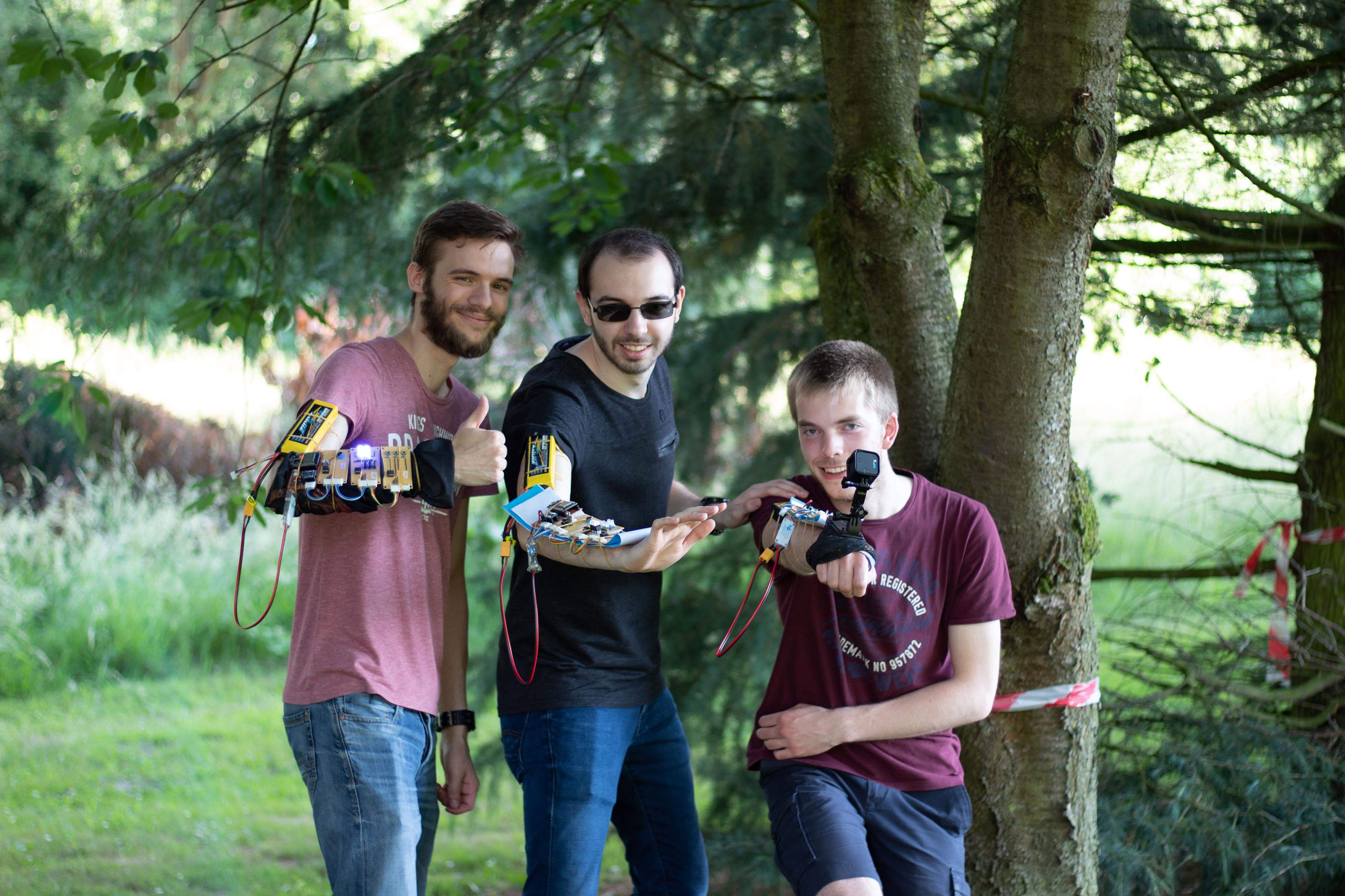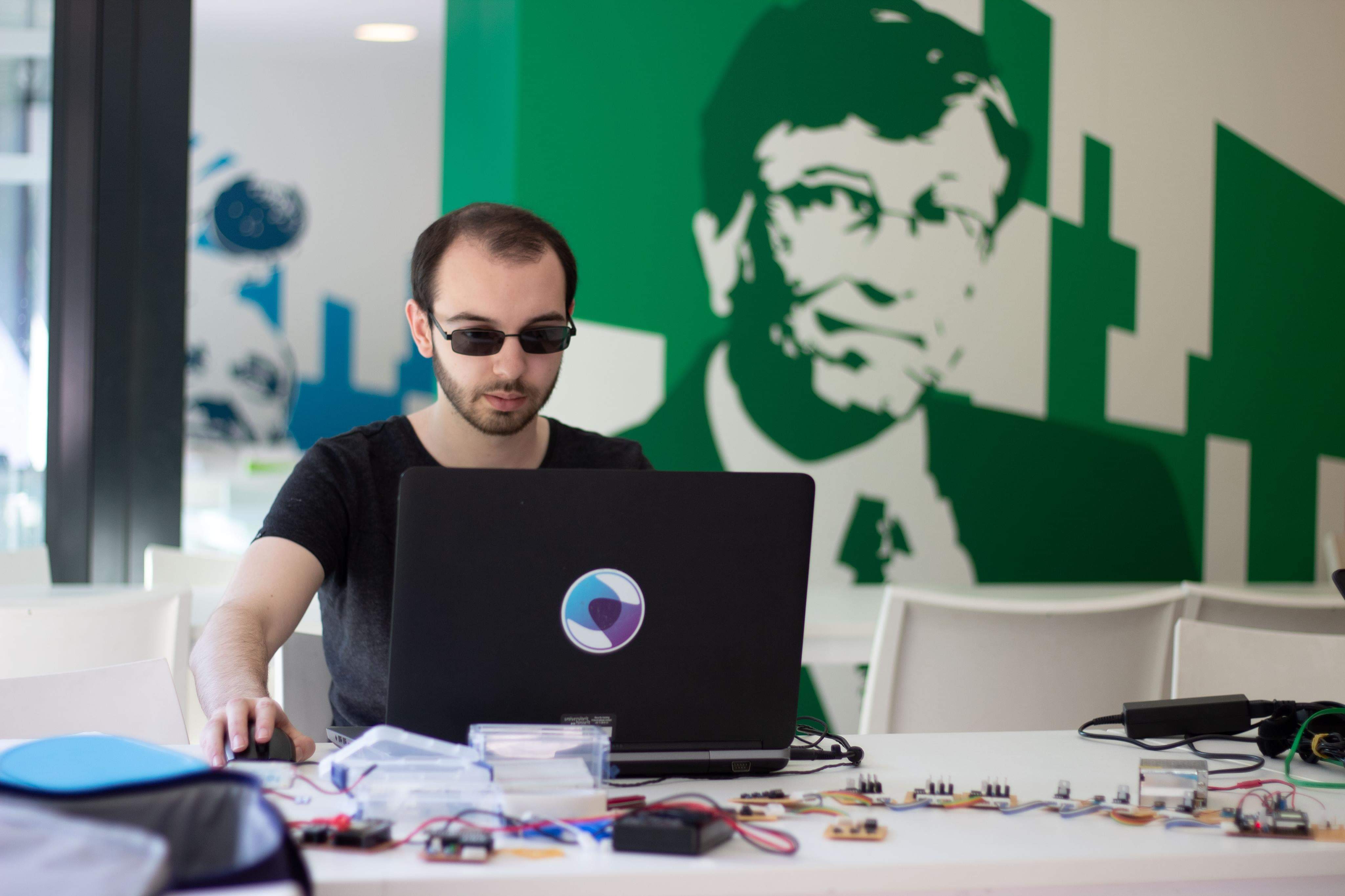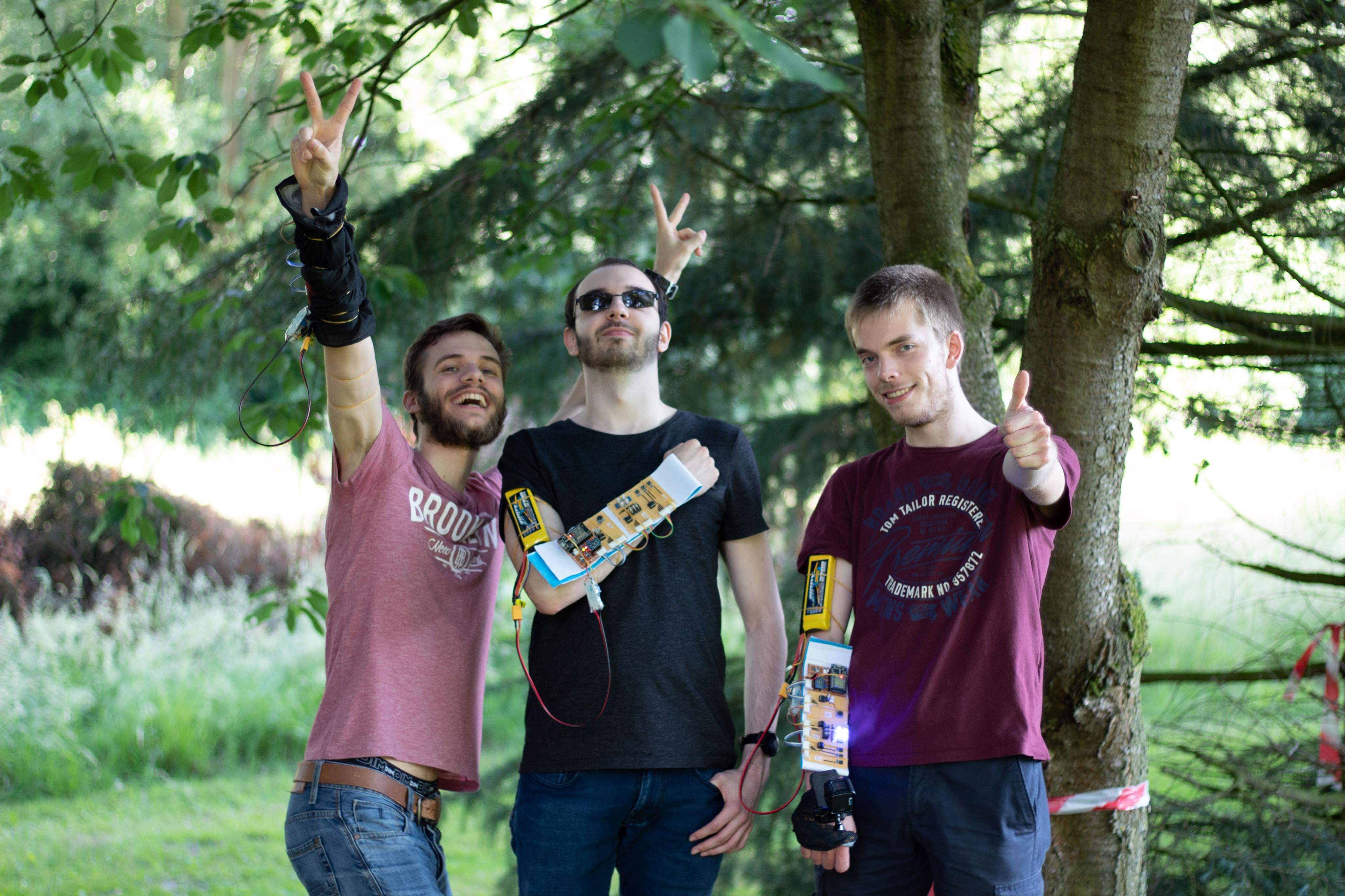Tools & Technologies for Interactive Systems Development
In this course, the goal is to learn building interactive systems that use a combination of different non-standard technologies. Some of the technologies that are used in this course are: 3D printers, laser cutters, projection systems, webcams, Kinect camera's and more.
The first half of the course consisted of assignments to get introduced to the concepts, the second half was a large project where students could decide themselves what to build. Below the different assignments are listed, and in the second tab of this page you can find the project I built with my groupmates.
Assignments
Android Application: Geo-Todo
The goal of this assignment was to make an Android application that allows you to store and manage a list of todo's and place them at a location together with a radius. When you enter the radius at the location, the todo will appear on your phone to help you remind you.
Kinect Powershooting
The goal of this assignment was to simply built any sort of program using a combination of a Kinect camera and a projector. We decided to make a 1vs1 projection game where you shoot power orbs at each other by charging it up using one gesture, and shooting it towards the player with the other. The kinect camera also tracks the location of the player and aligns it with the projection system to visualize the player on the projection game.
Led Light Touchscreen
The goal of this assignment was to create a touch screen using visible light by refracting the light throughout plexiglass. Within this project it was required to use a laser cutter to cut and bend the plexiglass, solder the lights together inside the frame and put a webcam inside. Using this webcam and OpenCV, the coordinates of the fingers can be extracted when the top has been touched.
Project: Collaborative Smart Fiber for Game Enhancement
For the project, we were given full freedom about what we could make, as long as it fitted within the context of the course. The group consisted of me, Joris Herbots and Mannu Lambrichts, and we had decided to build a modular game platform for smart clothing.
Within this project we built the modules that can be attached to the body and can be interacted, a modular programming kit that allows for quick prototype creation in Python, and several game examples built using the programming kit. The game modules (and the excited group of sleep deprived students) are visible on the picture to the right (or below on mobile). We did attach the batteries to our arms since we were quickly prototyping and testing the system, DO NOT TRY THIS AT HOME!


Before the final day of the project deadline, we had mostly worked separately on each respective responsibility (game modules, programming kit, example games). When the final day arrived, we had a total of three responsibilities: test the modules together with the game code for the very first time, make a video of the working system, build a presentation to present the following day. Sleep deprived and stressed out (the sun glasses were not just because of poor style), we started live debugging the system and getting ready to film the video required for the course project. Running the code on the game modules properly was a lot harder than expected because compilation errors kept on appearing out of nowhere.
However, at one sudden moment, everything started flowing together seamlessly and we were ready to start filming! The deadline was in the evening and it was already 5PM at the time, meaning we had no time to waste. Several painstaking hours later, we had completed everything, giving the following video as a result.
- Technical Explanation: 00:00 - 2:14
- Demo video: 2:14 - 3:14
After painstaking hours until late in the night, we had completed the video, the presentation and the system was fully functional. It was a fun project with an amazing team and was no doubt one of my favorite student projects. The modular programming kit is also available on Github for other developers to make use of.
All in all, we can definitely say: MISSION ACCOMPLISHED!
